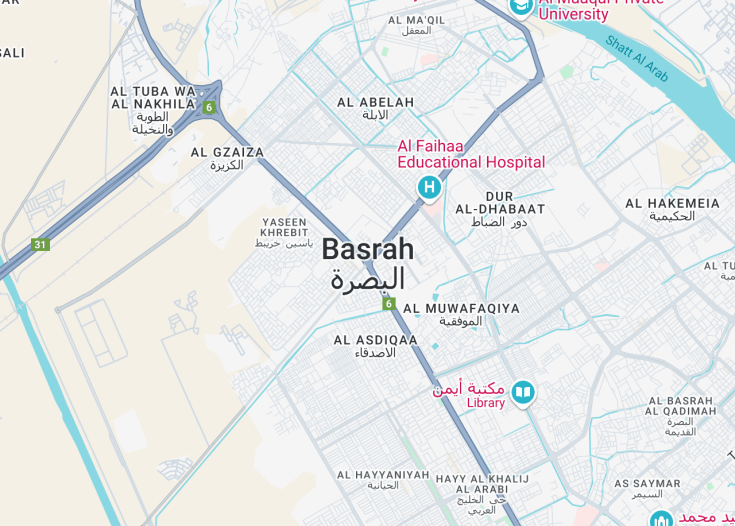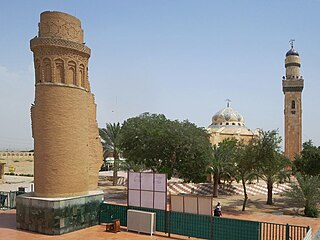Basra, the second largest city in Iraq, often referred to as the “Venice of the East” due to its extensive network of canals, offers a unique glimpse into the country’s rich history alongside modern development. This city is a mosaic of cultural influences, prominently displaying its historical significance through architecture that spans several eras – from ancient Islamic to Ottoman and Persian influences. Visitors can explore bustling markets, architectural landmarks and the scenic Shatt al-Arab, where the Tigris and Euphrates rivers meet. Basra’s economic importance cannot be understated, being a critical hub for the oil sector and a gateway to the Persian Gulf.
Traveling to Basra requires mindfulness of local customs and security advisories. It is recommended to plan visits through reputable travel agencies well-versed in regional specifics.
For a genuine experience, embark on a traditional riverboat ride along the Shatt al-Arab to observe the blend of urban and natural landscapes of Basra.
How to best experience Basra?
Search for Tickets, tours, and activities in Basra using direct search on the following providers:
GetYourGuide.com Viator.com Trip.com Expedia.com Tiqets.com Ctrip.com (中文)
Basra: The Venice of the Middle East
| Country | Iraq |
| Time in Basra | GMT+3 |
| Language spoken | Arabic |
| Population | 2.5 million (source: World Bank) |
| Currency | Iraqi Dinar (IQD ₿) |
| Airports |
|
Located in southern Iraq, Basra is the gateway to ancient Mesopotamia. Historically significant, it was once a bustling port city. Today, it reflects a blend of its rich past with modern dynamics. Its strategic location at the junction of the Tigris and Euphrates rivers has long made it a commercial hub. The rich oil fields surrounding the city make it economically vital to Iraq, contributing significantly to the national economy.
Where is Basra?
Located in southern Iraq near the Persian Gulf, Basra is an essential logistical and commercial hub.
Distances:
| Route | Distance by car | Time by car |
|---|---|---|
| Baghdad to Basra | 340 miles / 547 km | Approx. 5 hours |
| Najaf to Basra | 235 miles / 378 km | Approx. 4 hours |
What is Basra famous for?
Basra is renowned for its historical significance in the Islamic Golden Age, rich cultural heritage, and as a major economic center due to its vast oil reserves.
History
Before 637 AD: Early History
The region now known as Basra was originally home to ancient civilizations that thrived near the fertile lands of the Euphrates and Tigris rivers. Archaeological findings suggest that the area was inhabited by Sumerian and later Akkadian populations, who benefited from the rich alluvial plains for agriculture.
637-1500s: The Islamic Era and Beyond
The official foundation of Basra dates back to the Islamic conquest in 637 AD, when it was established by the Arab general Utbah ibn Ghazwan under the orders of Caliph Omar ibn al-Khattab. Basra swiftly became an important port and trade hub, linking the Islamic Empire with the East. The city also emerged as a center of learning and culture during the Abbasid period but faced numerous challenges such as invasions by the Mongols in the 13th century and later the Black Death in the 14th century.
1500s-1900: Ottoman Rule
Became part of the Ottoman Empire in the 16th century and remained so until the end of World War I, except for a brief Persian occupation in the 17th century. During this time, Basra was an important administrative center but its economic role fluctuated due to political instability and changes in trade routes.
20th Century: Modern Era
In the 20th century, particularly after the discovery of oil in the Middle East, Basra’s significance as an economic hub was revitalized. However, the city also endured significant hardship during the Iran-Iraq War in the 1980s and the Gulf Wars. It suffered considerable infrastructural damage, which still impacts it today.
Visit Basra
What to see and do in Basra
Exploring Basra offers a mix of historical and modern attractions. Key sites include:
- The Basra Museum, housed in one of Saddam Hussein’s former palaces, showcasing artifacts from the area’s rich history.
- Shatt al-Arab, the river formed by the confluence of the Euphrates and Tigris, perfect for riverside walks and boat trips.
- The old city marketplaces where visitors can immerse themselves in local culture and purchase traditional crafts and foods.
- Marshlands of the Tigris and Euphrates, recently revived and home to a unique ecosystem.
Visitors can also enjoy local cuisine that includes fresh fish dishes and famous Iraqi dates.
Festive Highlights in Basra
Basra hosts several cultural and religious events throughout the year. Notable among these are the Basra International Film Festival, usually held in December, which showcases regional cinematic talents. The Basra Book Fair, occurring annually in March, attracts literature enthusiasts from around the region.
Best time to visit Basra
The best time to visit Basra is during the cooler months from October to April, when temperatures are more pleasant, and outdoor activities can be enjoyed comfortably.
Is Basra worth visiting?
Balancing the rich historical context with its recent tumultuous history, Basra offers a unique insight into both ancient and modern Iraqi life. Attractions such as the revitalized marshlands, historical architecture, and cultural festivals are compelling reasons to visit. However, potential travelers should be mindful of the ongoing reconstruction efforts and sporadic political instability in the region. For those interested in a deeper understanding of Iraq’s diverse history and culture, Basra is undoubtedly worth incorporating into their travel plans, albeit with appropriate planning and safety considerations.

